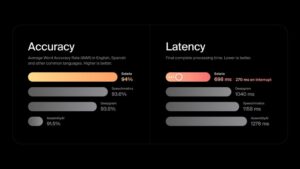Huawei Prepares to Launch New AI Chip for Mass Production Amid Push for Nvidia Alternatives in China

Huawei’s New AI Chip: A Step Towards Independence
Huawei Technologies is making strides in artificial intelligence (AI) by preparing a new AI chip aimed at mass production. This development comes as China searches for alternatives to Nvidia’s offerings, especially in light of ongoing geopolitical tensions and technology restrictions.
The Need for Alternatives
Global Context
Due to increasing restrictions from the United States on technology exports, especially concerning semiconductor technology, Chinese companies face significant challenges. Nvidia, a market leader in AI chips, has been impacted by these sanctions, which restrict sales of advanced chips to certain countries. As a result, the demand for homegrown alternatives within China has skyrocketed.
Huawei’s Strategic Move
To tackle this need, Huawei has been actively working on an AI chip that could potentially rival Nvidia’s products. Sources suggest that this new chip could be crucial in strengthening China’s semiconductor industry. Huawei’s leadership in developing this technology signifies a pivotal move towards self-reliance in chip manufacturing.
Features of the New AI Chip
Performance and Specifications
While specific details about the new AI chip are yet to be fully disclosed, analysts anticipate several important features that could make it competitive:
- High Processing Power: The chip is expected to handle complex AI computations quickly, enhancing efficiency in various applications, from data centers to mobile devices.
- Energy Efficiency: Creating an energy-efficient chip is vital for sustainable operations, which is a growing concern in the tech industry.
- Integration Capabilities: The new AI chip is likely designed for easy integration with existing systems, making it attractive for developers and businesses looking to upgrade their AI capabilities without extensive system overhauls.
Market Applications
This new chip is anticipated to have a wide range of applications, including:
- Data Centers: Enhancing cloud computing capabilities.
- Smart Devices: Powering AI functionalities in everything from smartphones to smart home systems.
- Automotive Technology: Potential use in autonomous driving systems where rapid AI processing is crucial.
Challenges Ahead
Regulatory Hurdles
Despite the enthusiasm surrounding Huawei’s chip development, several challenges remain:
- Export Restrictions: Ongoing trade tensions could impact Huawei’s ability to source necessary components from global suppliers.
- Quality Assurance: Achieving performance benchmarks set by Nvidia could be a significant challenge, as the technology landscape is highly competitive.
Competition within the Industry
Other Chinese tech giants are also investing heavily in semiconductor research and development. Companies like Alibaba, ZTE, and Tencent are working on their AI solutions, which increases competition in the market. The rush to develop competitive technology means Huawei must continue innovating to maintain its market position.
Future Outlook
Implications for the AI Sector
The launch of Huawei’s AI chip could significantly impact both the Chinese and global AI landscape. If the chip meets performance expectations, it could help reduce China’s dependency on foreign technology, simultaneously fostering a more robust domestic tech ecosystem.
Broader Economic Impact
Beyond Huawei, the success of this chip could benefit suppliers and related industries within China, creating new jobs and stimulating economic growth in the tech sector. Increased investment in infrastructure supporting semiconductor manufacturing would further contribute to this growth.
In summary, Huawei’s new AI chip marks a critical development in China’s technological advancement, particularly in response to external pressures and internal demands for innovation. While challenges remain, the potential for this technology to reshape the market is significant.






